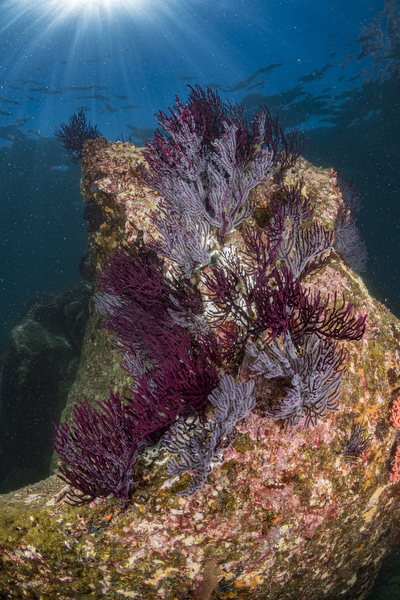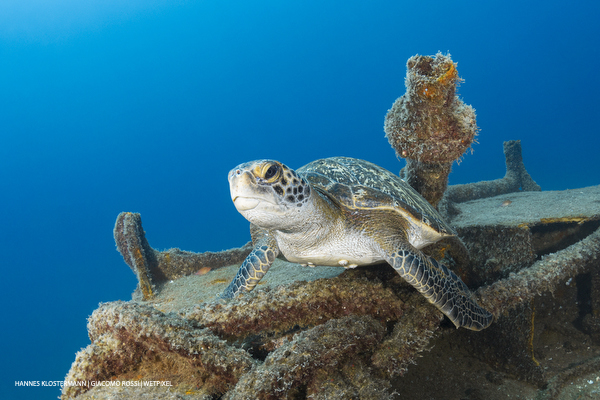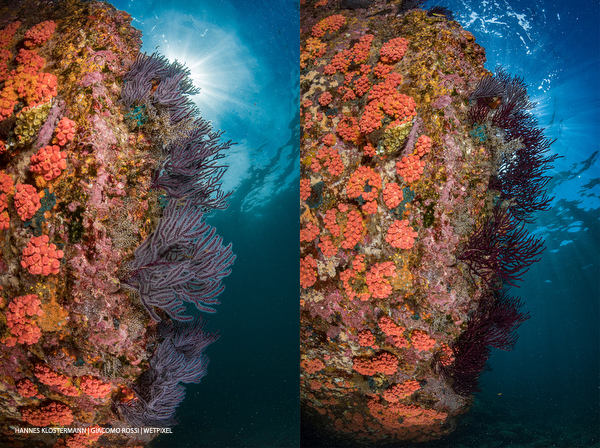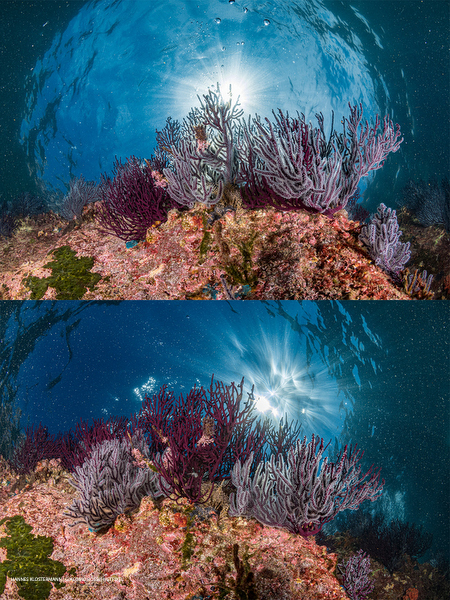Strobe Review: Scubalamp D-Max and Retra Pro Flash
Real-world impressions
Scubalamp D-Max
We tested the D-Max on five dives in the La Paz area. The strobes feel great and perform very well. The quality of light is good, with an excellent uniformity (especially when used with the D100 diffuser) and pleasing colors. The texture and tone of the images look great. The fast recycle time allows for rapid shooting of fast-moving subjects, greatly increasing the user’s chances of catching the peak of the action. Usability is very good, and during the five dives, the strobes worked as expected.
The high maximum power helps a lot in high contrast situations, like when the sun is behind the subject and the aperture needs to be closed. Overall they are a big step up from something like Sea&Sea’s YS-D2Js.



Retra Flash Pro
Hannes has been able to shoot the Retra Flash Pro for the better part of a year now. The quality of light is exceptional to the point where using diffusers seems unnecessary most of the time. They are really only necessary in very close-focus situations or when an even warmer color temperature is desirable. The standard color temperature of 4900K is ideal in the kind of blue water we get here in La Paz during most of the year and during the very best months, the warming diffusers help bring out that rich blue even better. In terms of usability, the strobes are excellent and a huge upgrade over Hannes’ previous Inon Z-240 strobes. The different lengths of the dials allow for simply feeling for the right one without looking even without any muscle memory. They could click in place a little better though as it is possible to leave the dial between two positions. The Retra Flash Pro is plenty powerful even for bright daylight shooting in shallow waters, as is often the case in the waters around the Baja California peninsula. Starting out without the Supercharger the limitations in recycle time and battery autonomy became very apparent. Using the Supercharger, however, has improved things to a very acceptable level, even when being surrounded by playful sea lions that move at lightning speed.


All in all the Retra Flash Pro is a fantastic device. The quality of light is outstanding. The amount of light produced is remarkable given its small size and when using the Supercharger recycle times are reasonable even at higher power. Innovative new features set these strobes apart from the crowd and make them feel more like something produced in the smartphone age. To get a more powerful upgrade to this strobe one has to pay almost double the price so as far as value for money goes the Retras is easy to recommend.

Comparison
We have also produced a couple of similar images over the course of two days to provide a more “apples-to-apples” comparison between the two strobes. While the Retra Flash Pro does provide a slightly more pleasing light, the D-Max is not far off and does produce beautiful illumination as well. It does, however, produce slightly less pleasing water colors than the Retra.


Conclusions
We have reviewed and compared two exciting new additions to the underwater flash market: the Retra Flash Pro and the D-Max from Scubalamp.
The D-Max features a bright beam with a very good quality of light and excellent coverage. It has class-leading battery autonomy. Unfortunately, the global output power is not even close to what is being advertised but instead appears to fall a few Watt-seconds short of the Retra Flash Pro. Recycle times are very impressive, albeit not quite reaching the claimed values. The handling underwater is also good, with just some minor details like the upside-down labels that make reading the power level just a tad more awkward. The lack of pre-flash cancellation is a potentially severe shortcoming as could be the unsealed battery compartment. Overall it is a great first offering of a company that has previously only produced torches and can certainly be improved on significantly by accessories and in future iterations of the design. Warming diffusers or beam restrictors for example would make fantastic accessories.
In this comparison, however, the Retra Flash Pro emerges as the winner. It is an overall more mature product and really shows how much Retra has involved underwater photographers in the development of the product in both small details as well as its main features. The quality of light is gorgeous even without using diffusers and a whole range of accessories can be used to modify the light to suit the photographer’s vision. Light output is a big upgrade over previous generation strobes and the addition of HSS allows for even more creative use. The only weakness of this strobe is at the same time one of its strengths: the use of standard AA batteries. While it is comforting to know that wherever in the world you are, you will almost always be able to find a replacement should one fail, the power requirements of such a high-performance strobe really show the limitations of this type of battery. Recycle times are fairly slow and the number of flashes produced on a single charge falls far short of what the D-Max can offer. The Supercharger somewhat closes this gap and is a great improvement, but still won’t allow for similar battery performance. It should be noted that Retra has just announced an updated version of the Retra Flash: The Retra Flash Pro/Prime X, which features up to 25% faster recycle times and up to 20% more flashes per charge, thanks to an optimized flash triggering system. This is according to Retra of course, so time will tell if these claims can be verified. Nevertheless, any improvements of these two factors would be greatly appreciated and could lift this fantastic strobe to even higher levels of praise.
- Introduction
- Scubalamp D-Max
- Retra Flash Pro
- Underwater review and strobe comparison
- Comparison and Conclusion